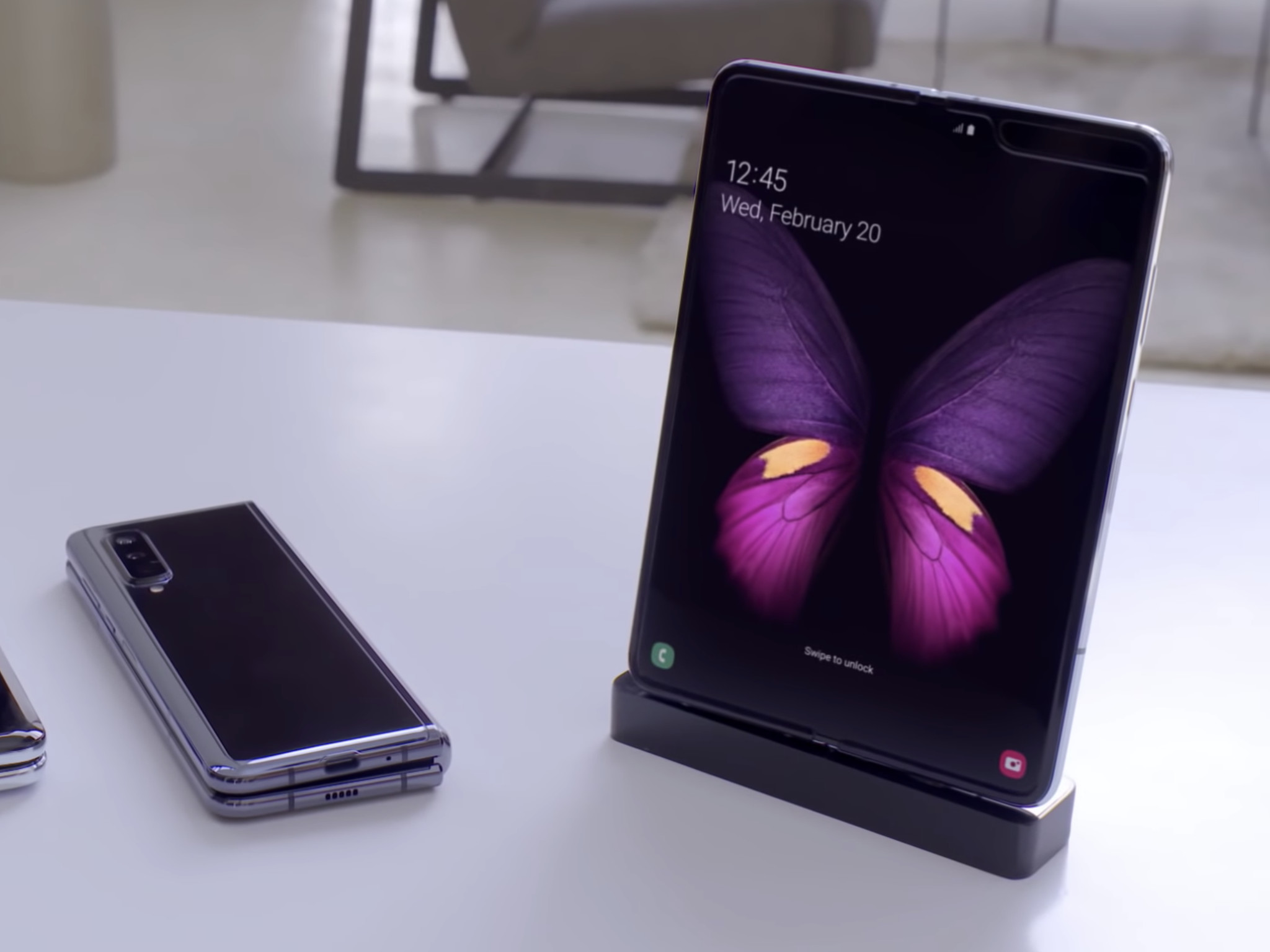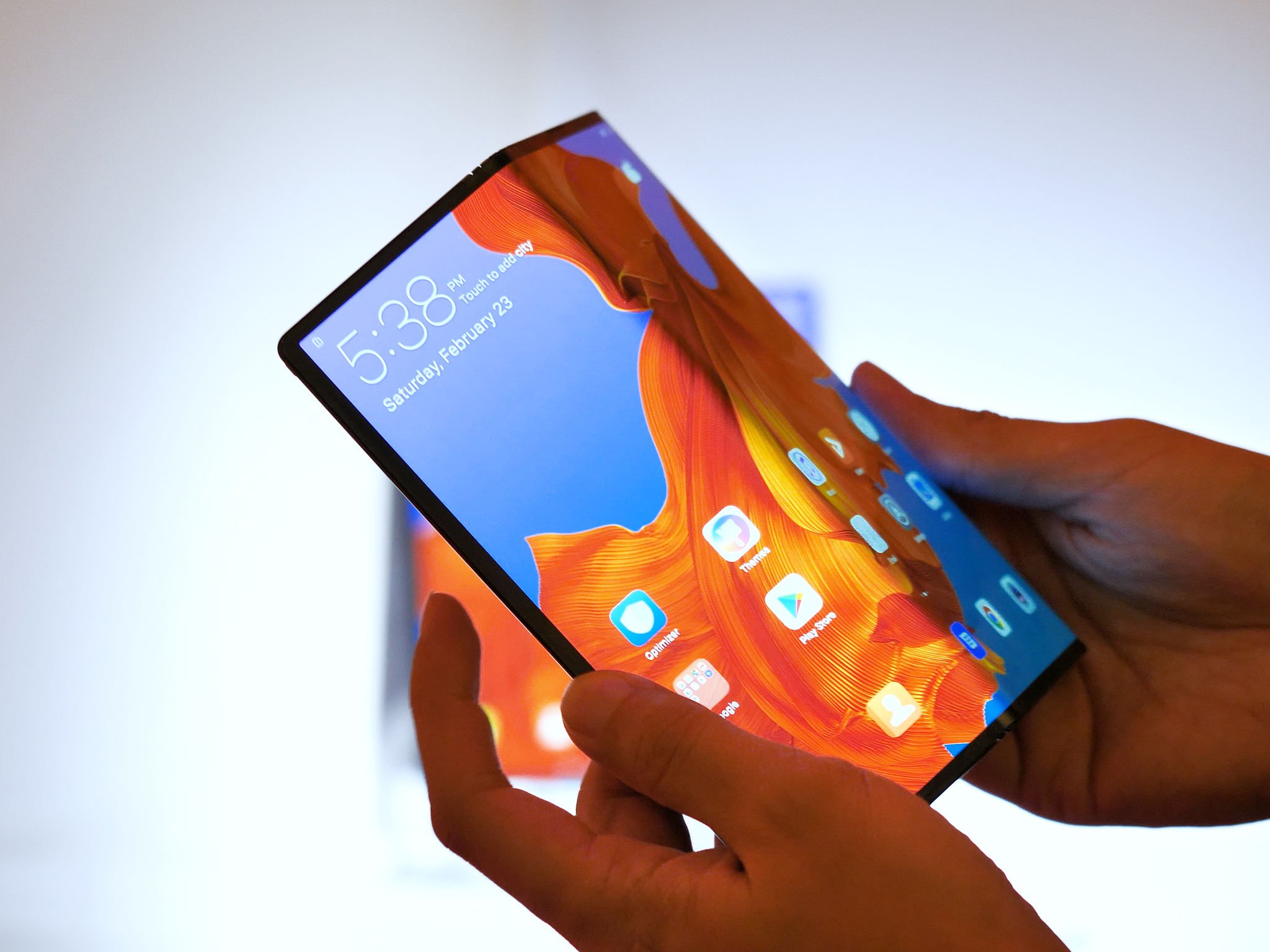Samsung Galaxy Fold vs. Huawei Mate X — Are foldables the future?

Samsung has shown off the Galaxy Fold. Hawaii the Mate X. Oppo... another Mate X? That Xiami tease. LG… whatever the hell this is. And, never mind the Royole FlexPai. Just, flashy thing me already. It's foldapalooza 2019, but is any of it any good — and which of it the best? At least for now?
Don't want to read? Hit play and watch the video version!
Everything fold...
Confession: I love this. The heady days when nerdy new gadget types are still so nerdy and new they squeak when you turn them on too fast. No one really knows what they're doing yet and everyone, almost, is just experimenting and trying to figure things out.
READ: Huawei Mate X vs. Samsung Galaxy Fold: Which one should you save up for?
See, Apple never participates in this part. They prototype the stuffing out of stuff internally, of course, but otherwise they prefer to sit back, watch, and learn from how everyone interacts with everything that hits the market. That's how they figure out the big problems that still need solving and the ways, hopefully, they can make a difference.
And I love watching too. There were 10 years of smartphones before iPhone. Candybars with keyboards, Flippers, Sliders. Side kickers and tilters. Each beautiful and terrible in its own way.
Same with ten years of tablet PC before iPad and five years of smart watches before Apple Watch.
iMore offers spot-on advice and guidance from our team of experts, with decades of Apple device experience to lean on. Learn more with iMore!
After Apple, most vendors seem to treat them like reference designs and coalesce around a few mainstream ideals. But in the early days, everything is on the table.
Look no further than the Samsung Galaxy Fold and the Huawei Mate X. Or, as my friend and colleague from Android Central calls them, the innie and the outie. TM, of course.
Samsung Galaxy Fold
Samsung's first, bold move into foldables is almost exactly what I talked about in my previous video — link in the description. It's as classic a design as you can get, given that it has a cover and you open it up, just like we humans have been doing with books for functionally ever.

The innie has the advantage of protecting the foldable display when it's closed. Which is good, because these first generation foldables have plastic screens.
Yeah, there's no Gorilla Glass that bends without breaking yet, so just how well flexible OLED will hold up to scuffs and scratches remains to be seen… but is pretty easily imaginable, especially considering how every standard phone uses Gorilla Glass precisely for that reason.
It also means you can mount the cameras on the back cover, so you get the full width for the full display, and you don't need to leave room for the bump handle flap thing.
You could Gorilla Glass up the front cover screen, at least. But it necessitates you having that extra, disconnected, front cover screen that apps have to literally jump to and from to offer a continuous experience.
And you can't double dip on the cameras, so you can run into some duplication needs there.
Overall, the innie seems better protected but less efficient.
Huawei Mate X
Huawei, on the other hand — other side… other fold? Whatever — is zagging where Samsung zigged. Instead of an innie, they're going full on outie. Front and back cover screens that open up to be the full screens. That means there's no separate cover screen, no third screen to worry about. But it also means, when folded, both those screens are just left hanging out there, exposed, all naked and abrasion afraid. Because, yeah, chemically hardened glass doesn't yet fold and plastic isn't yet as durable.

It also means you don't have to worry about apps jumping between screens. Start closed in phone mode, open wide in tablet mode, and the app just laps up that extra space. Well, at least as much as any Android app currently will. While Google has made the tech available for ages, many developers have simply never bothered to embrace it. Will foldables change that? All the foldable fingers crossed.
At least in Huawei's case, though, it's not using the full width. It's squaring things off, almost, by leaving the leaving the Everest of all camera bumps running down one full side. It's great, because it means the display can run hole loose and notch free, and the main cameras can serve for both your selfies and elsies — is too a word. And it can even pull double, triple, I've lost count duty and a handy handle for when you're in tablet mode.
But you do lose absolute screen surface and it does make things undeniably lopsided.
So, unsurprisingly, the outie winds up being more efficient but less well protected.
Now and then
I'm very much intrigued by aspects of both the Samsung Galaxy Fold and the Huawei Mate X. Like I said, I love seeing the gadget sausage getting made.
Samsung's solution is more complicated, but is it more practical or just overkill? Huawei's is more elegant but is idealized or just compromised.
To be clear, neither a response or answer to the other. That's just lazy tech writing fodder. All this stuff is so new we haven't had time for response videos, much less full on, year or years-long product development cycles.
And there's a ton of work that still needs to be done, including figuring out how to make those bendable screens more durable. How to make those creases less distracting — and that's assuming they currently won't get worse over time, which is a pretty big assumption.
Because there won't be an own the crease movement the way there is for notches and holes. Not unless someone wants to argue butting a Courier-style pocket there is better than having a full-on tablet screen, and that's going to be a really tough argument to win.
But damn, that crease.
Still, the concept is compelling: Use your phone on the go and then stop fold it out into a tablet to work or play.
To be continued
We're going to see so many foldables coming so fast this year. And, maybe sooner rather than later this time, given the acceleration of the adoption curve, we may even see something from Apple.
They'll wait until they can field hardware they're happy with, of course, maybe solving several of the problems I outlined above. But, thanks to size class and the massive catalog of existing universal binaries for iPhone and iPad, their software story is already well ahead.
For now, though, this looks like a Samsung vs. Huawei battle, and while I know some are giving Huawei the edge, concerns around Huawei and the Chinese government are such that early American foldable adopters may not really have a choice.
At least not yet.
At least that's what I think. Hit like, hit subscribe, and then hit up the comments and let me know who you think is winning the opening shots of the foldable wars.

Rene Ritchie is one of the most respected Apple analysts in the business, reaching a combined audience of over 40 million readers a month. His YouTube channel, Vector, has over 90 thousand subscribers and 14 million views and his podcasts, including Debug, have been downloaded over 20 million times. He also regularly co-hosts MacBreak Weekly for the TWiT network and co-hosted CES Live! and Talk Mobile. Based in Montreal, Rene is a former director of product marketing, web developer, and graphic designer. He's authored several books and appeared on numerous television and radio segments to discuss Apple and the technology industry. When not working, he likes to cook, grapple, and spend time with his friends and family.
